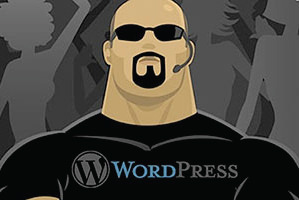Spending days designing your WordPress website only to have it hacked can demoralize the biggest optimists, especially when you are running a business on it. But you must know that when you are on the Internet, there are always risks involved. Without further ado, let us look into some positive steps you can take to make sure that your WordPress security is up to date.
Basic Security Tips
- Make sure that you always use a secure hosting. A large number of WordPress hackings are caused by vulnerable security loopholes in the hosting platform. When choosing a web host, cost should not be the only criteria. Look for older companies that have a good history of providing security.
- Always update the latest WordPress fixes and patches for your website as well the plug-ins you use. Hackers may target older versions of WordPress or plug-ins, so keep your site protected from these attacks. New available patches will show up as alerts on the notification area of your Dashboard.
- Evaluate the strength of your passwords. Nearly a tenth of WordPress hackings are due to weak passwords.
- While weak passwords leave your website vulnerable, so do weak usernames. Never use “admin” as your username, as recent hackers have been trying to enter websites with an “admin” username and weak passwords. Versions of WordPress above 3.0 lets you choose your own username, so use that option to create a less obvious username. Simply create a new admin account, log in with the new username, and delete the old admin account. Your posts under the old account can be assigned to the new username when you delete the old one.
- Change the default display of your username from the author archive page to hide it.
- To stop hackers who will try multiple times to log into your account, you can simply limit the number of login attempts that are allowed from a single IP address. You can do this with the plugin called Limit Login Attempts.
- By default, you can enter the Editor through the Appearance tab and edit your theme files – and so can hackers. You can prevent this by adding a simple code to your wp-config.php file and change this capability: define(‘DISALLOW_FILE_EDIT’, true);
- Stay away from free themes if you can, as they are more vulnerable to attacks, especially if they are not built by a developer you can trust.
- Always backup your website regularly, so if things go wrong, you will be able to quickly get back to normal. You can find out how to backup your site from the WordPress support page, or use a plug-in like WordPress Backup To Dropbox for scheduled backups.
- Use plugins for security. A list of great plugins that you can use is given below –
Install Plug-Ins For WordPress Security
- Akismet Plugin: This is a simple CAPTCHA plugin that will automatically stop basic spam and other attacks on blogs and websites.
- WordPress Firewall Plugin: This is a great plugin that will offer comprehensive protection to most other WordPress plugins as well as your website from intercepts, record suspicious parameters and even let you whitelist select IP addresses. The best part is it is highly customizable.
- Sucuri Scanner: This plugin will scan your website for malware and other suspicious activities.
- Wordfence: Another security tool for enterprises that offers virus scanning, firewall, real-time traffic and even repairs for your themes, core and plug-in files without backup.
- Bulletproof Security: This is a great WordPress plugin that protects against a number of hacking techniques.
The basic tips above will benefit anyone with a WordPress website, but there is no need to panic. You can follow all of them or a few. Usually it is enough to have a strong username and password. It is only important to keep security in mind and evaluate the measure for your website from time to time. You also do not need to install all of the plugins. Choose the one that suits you best and you’re good to go. Good luck!


